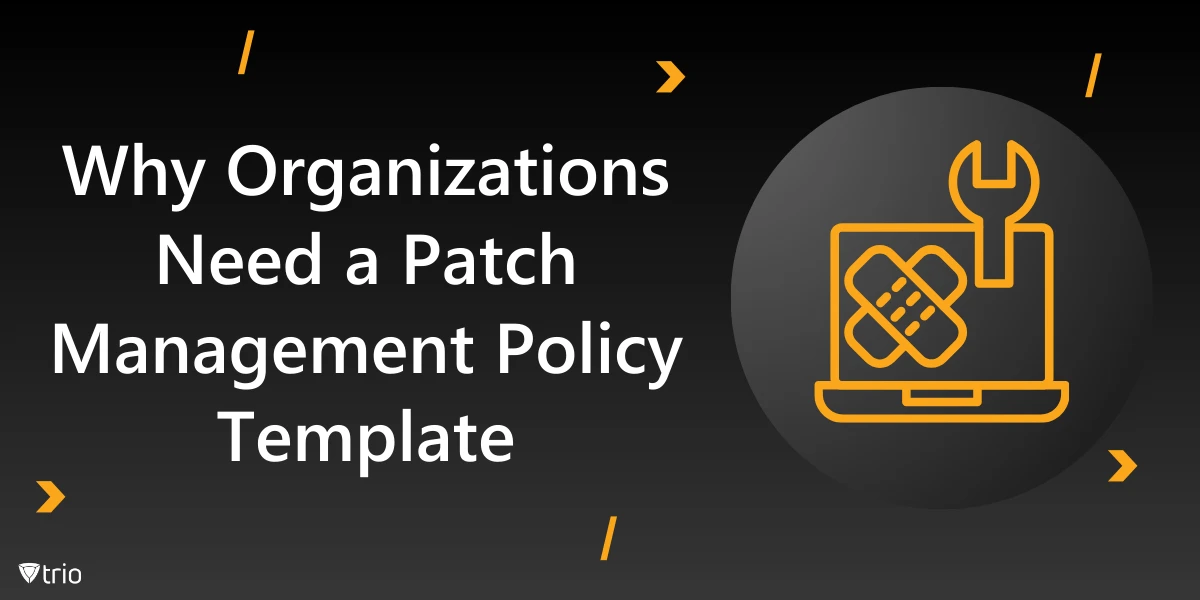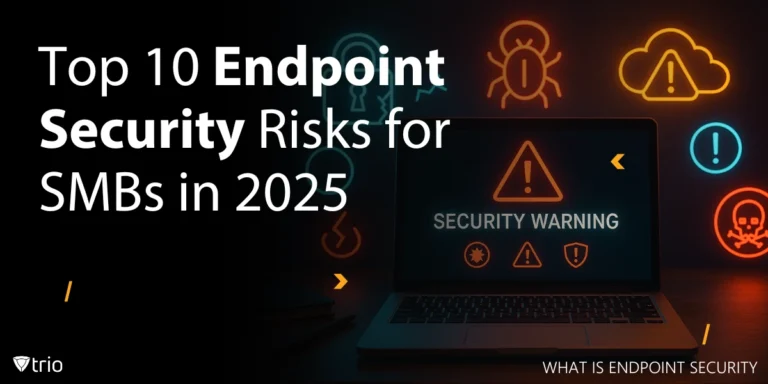In today’s rapidly evolving digital landscape, vulnerabilities in IT systems pose significant risks to organizations. Hackers constantly exploit outdated software, making unpatched systems an open door to cyber threats. A robust Patch Management Policy is a cornerstone of cybersecurity and operational efficiency, ensuring your IT infrastructure remains secure and up-to-date. This blog explores the critical importance of patch management, the challenges of handling it effectively, and how a clear policy can streamline the process while reducing risks.
The Importance of Patch Management
Patch management is the process of identifying, testing, and deploying software updates to fix vulnerabilities, improve functionality, or address performance issues. It is a proactive approach to ensuring your systems are not only secure but also optimized for better performance.
Unpatched software can lead to severe consequences, including:
- Security Breaches: Cybercriminals exploit known vulnerabilities to access sensitive data or disrupt operations.
- Regulatory Non-Compliance: Failure to maintain patched systems can result in penalties under laws like GDPR, HIPAA, or PCI-DSS.
- Operational Downtime: System failures caused by neglected updates can disrupt business continuity and productivity.
By implementing a structured policy, organizations can mitigate these risks while ensuring a standardized approach to patching.
Vulnerability and Patch Management
Vulnerability management involves identifying, assessing, and mitigating security vulnerabilities across an organization's IT environment. The process starts with regular vulnerability scans to detect weaknesses in systems, applications, and networks. These scans are followed by risk assessments to prioritize vulnerabilities based on their severity, likelihood of exploitation, and potential impact on the organization. Effective vulnerability management aims to reduce the attack surface and enhance overall security posture.
Patch management is a critical component of vulnerability management, focusing on the remediation of vulnerabilities by applying software updates or fixes provided by vendors. Once vulnerabilities are identified, patch management tools and processes ensure timely deployment of patches, addressing known weaknesses before attackers exploit them.
Together, vulnerability and patch management form a holistic approach to maintaining security. However, they must be tightly integrated to be effective. Vulnerability scans provide insights into unpatched systems, while patch management tools ensure those vulnerabilities are addressed systematically. Without this integration, organizations risk leaving critical vulnerabilities exposed, even if patches are available.
Challenges in vulnerability and patch management include the sheer volume of patches released, balancing patching schedules with business continuity, and managing updates in complex environments. To overcome these issues, organizations must adopt automated tools, establish robust processes, and continuously monitor for emerging threats. This proactive approach reduces the risk of data breaches and strengthens resilience against cyberattacks.
Key Components of a Patch Management Policy
A comprehensive patch management policy starts with a defined scope and purpose, clarifying which systems, applications, and devices it covers. This ensures that IT teams have a clear understanding of what falls under the policy, including on-premises servers, cloud environments, and employee devices. A clearly articulated purpose, such as enhancing security, maintaining compliance, or reducing system downtime, helps align the policy with organizational objectives.
The next critical component is the patching process itself, which should outline how patches are identified, prioritized, tested, and deployed. For example, the policy should include guidelines for assessing patch severity, such as whether it addresses critical security vulnerabilities or routine updates. Testing patches in controlled environments is essential to ensure they do not disrupt existing workflows or cause system incompatibilities. A deployment strategy, such as phased rollouts, should also be detailed to mitigate risks during implementation.
The policy must also define roles and responsibilities for everyone involved in the patching process. For instance, IT administrators may be tasked with applying patches, while security teams monitor vulnerability announcements and ensure critical patches are prioritized. End-users should also have clearly defined expectations, such as ensuring their devices remain connected for updates or reporting potential issues. Assigning responsibilities helps streamline workflows and reduces the chance of overlooked vulnerabilities.
Lastly, the policy should include compliance and reporting requirements. Many organizations are subject to industry regulations, such as GDPR or HIPAA, which mandate timely patching of security vulnerabilities. The policy should specify how compliance will be monitored and documented. Additionally, reporting mechanisms, such as logs of applied patches or incidents caused by unpatched vulnerabilities, ensure transparency and enable continuous improvement of the process.
The Challenges of Patch Management
One of the primary challenges of patch management is timely identification and prioritization of patches. Organizations often rely on numerous software vendors, each releasing updates at different intervals. Security teams must sift through these updates to determine which are critical and which can wait, a time-consuming process that can delay action on urgent vulnerabilities. Missing critical patches increases the risk of exploitation by cyber attackers.
Another significant challenge is compatibility and testing, especially in complex IT environments with interconnected systems. Applying a patch without proper testing may lead to software conflicts or performance issues, disrupting business operations. For example, a patch for one application might inadvertently affect another, causing unexpected downtime or functionality issues. Testing patches thoroughly, while necessary, can slow down deployment.
Organizations also face resource constraints, both in terms of personnel and tools. Small IT teams may struggle to manage the volume of updates required to keep systems secure. Without automated tools, patching can become a manual, labor-intensive process prone to human error. Even with automation, some patches require specialized expertise for proper configuration, adding to the workload of already stretched teams.
Finally, compliance and tracking pose ongoing challenges. Many industries have strict regulations for patch management, and failing to meet these standards can result in hefty fines or reputational damage. Tracking and documenting applied patches are essential for audits, but maintaining accurate records across all systems can be a daunting task. This becomes even more difficult in organizations with hybrid or multi-cloud environments, where visibility into all assets is limited.
Benefits of a Patch Management Policy Template
A patch management policy template provides a structured framework for organizations to standardize their approach to software updates. By using a template, businesses can ensure that critical patches addressing vulnerabilities are identified and applied in a timely manner. This proactive approach significantly reduces the risk of cyberattacks, such as ransomware and data breaches, which often exploit outdated systems. Furthermore, it helps maintain a consistent security posture across all devices and applications within the organization.
In addition to enhancing security, a patch management policy template improves operational efficiency. It eliminates guesswork by clearly defining roles, responsibilities, and processes for patching activities. IT teams can follow streamlined workflows, ensuring updates are tested, approved, and deployed without unnecessary delays. This reduces downtime and system disruptions, keeping business operations running smoothly while fostering greater collaboration between teams.
Compliance with regulatory requirements is another critical benefit of a patch management policy template. Many industries, including healthcare, finance, and retail, have strict rules regarding system security and vulnerability management. A documented patch management policy ensures that organizations can meet these requirements consistently. It also facilitates audits and demonstrates accountability, building trust with customers and stakeholders while avoiding potential fines or reputational damage.

Patch Management Best Practices
Some of the best practices for patch management include:
- Maintain an Accurate Asset Inventory: The first step is knowing what you have. Keep an up-to-date inventory of all hardware, software, and systems in your environment. This ensures no system is overlooked when applying patches, reducing the risk of vulnerabilities.
- Prioritize Patches Based on Risk: Not all patches require immediate action. Use a risk-based approach to prioritize critical patches for high-severity vulnerabilities that could cause significant damage. Focus on addressing exploits actively targeted by cybercriminals.
- Test Patches Before Deployment: Always test patches in a controlled environment before applying them to production systems. This reduces the risk of compatibility issues, system downtime, or unexpected errors caused by untested updates.
- Automate the Patch Management Process: Implement patch management tools to automate the detection, deployment, and tracking of patches. Automation saves time, reduces manual errors, and ensures consistent patching across all systems.
- Establish a Regular Patch Schedule: While critical patches should be applied immediately, regular patch cycles help maintain consistency. Set clear timelines for testing and deploying routine updates to minimize disruptions.
- Document and Report Patching Activities: Keep detailed records of applied patches, including timelines, systems updated, and issues encountered. This documentation is vital for audits, compliance, and identifying trends in recurring vulnerabilities.
- Train Employees and Raise Awareness: Educate staff about the importance of patches, particularly for devices under their control. Encourage prompt reporting of system issues or vulnerabilities to IT teams.
How to Create a Patch Management Policy Template
Creating a patch management policy template begins with defining its purpose and scope. Clearly state the objectives of the policy, such as improving security, minimizing downtime, and ensuring compliance. Specify which systems, applications, and devices the policy covers, including on-premises servers, cloud-based resources, and mobile devices. This step sets the foundation for the document and ensures that all relevant areas of the IT infrastructure are addressed.
Next, outline the patch management process in detail. Include steps for identifying patches, prioritizing them based on severity, testing for compatibility, and deploying them across systems. Define the roles and responsibilities of key stakeholders, such as IT administrators, security teams, and end-users, to avoid ambiguity and ensure accountability. Incorporate a section on how to document applied patches and report issues encountered during deployment.
Finally, add sections for compliance, tools, and policy review. Specify timelines for applying critical patches and aligning with industry standards or regulations. List approved tools for patch management, such as automated scanning and deployment systems. Conclude with a review and update process to ensure the policy remains relevant as technology and threats evolve. Once complete, the template should provide a practical, reusable framework that simplifies patch management while aligning with organizational goals.
Free Patch Management Policy Template
Patch management is a vital component of maintaining a secure and efficient IT environment. A clear policy ensures your organization is prepared to address vulnerabilities proactively while minimizing risks, downtime, and compliance issues. To get started download our general patch management policy template below.
Ready to streamline your patch management process? Trio offers robust solutions to help you implement and manage your policies with ease. Try our free trial today to learn more!
Get Ahead of the Curve
Every organization today needs a solution to automate time-consuming tasks and strengthen security.
Without the right tools, manual processes drain resources and leave gaps in protection. Trio MDM is designed to solve this problem, automating key tasks, boosting security, and ensuring compliance with ease.
Don't let inefficiencies hold you back. Learn how Trio MDM can revolutionize your IT operations or request a free trial today!





